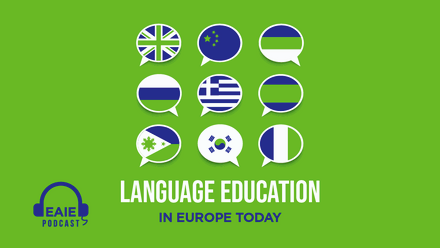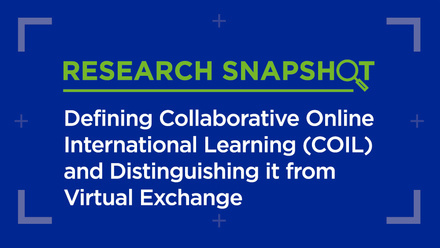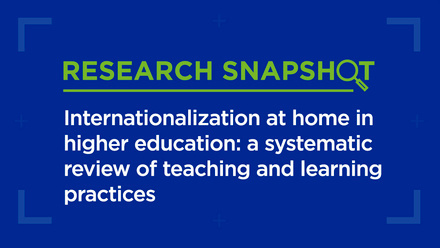Balancing local mother tongues with international languages

When travelling abroad, it is always fascinating to see the cosmopolitan ideal and practice of clocks at large international railway stations, airports and hotels, all showing the time in Brussels and New York, Budapest and Bucharest, Reykjavík and Cape Town simultaneously. It is a ‘glocal’ practice, suggesting that the global and local can be harmonised, or at least reconciled for a moment. Such clocks and the ideals behind them are like universities: they embody the multi-century ideal of the creation and transmission of knowledge, as well as the local embedding of universal ideals.
In matters of balancing local native languages with those deemed of international importance, Babeș-Bolyai University (BBU) reflects a similar glocal approach to education. BBU is the largest and most prestigious university in Romania, with three official ‘lines of study’ offered in Romanian, Hungarian and German. This structure has arisen at the end of a long and tumultuous history, with many turns, crises and long-negotiated forms of cooperation both at a larger societal level and within the university itself. And most of this tumultuous history is linked to the right to use one’s mother tongue in higher education: the right of Romanians to use their own language in times when the university was historically part of Hungary, or the rights of over a million Transylvanian Hungarians to learn, do research and teach in their native tongue today.
Transylvania’s multilingual history
The establishment of the Jesuit College in Cluj in 1581, led by Polish Jesuit Jakub Wujek, marked the beginning of higher education in Transylvania (which at the time was an independent Principality, recognised by the Ottoman Empire as such), with studies in Hebrew, Latin and Greek. Almost a century and a half later, while Transylvania was part of the Habsburg Empire, the College became University Academic College, and later on Royal Academic Lyceum. Another century later, between 1872 and 1918, teaching was carried out in Hungarian, with the foundation of the Hungarian Royal University in Cluj (under the rule of the Austro-Hungarian Empire). Beginning with 1919, the same higher education institution was turned into King Ferdinand I University – the first Romanian university in Transylvania, following the unification of all Romanian principalities and provinces. In this period most of the professors and students of the Hungarian University fled to Hungary. During 1948–1959, the university split into one Romanian and one Hungarian university, but in 1959 Babeș-Bolyai University came into existence as the single state university we know it as today, serving a region with a centuries-long history of linguistic diversity.
After the unification of all Romanian principalities into one nation, Romanian became the official language and mother tongue to the greater part of the people living within its boundaries. Thus, Hungarian and German are also mother tongues in Transylvania, though to a smaller proportion of the population.
Mother languages in the curriculum
This brief historical account of our university shows just how much language matters to us and how much we pride ourselves in preserving all mother tongues spoken in Transylvania. These diverse languages bear with them not just words, but also culture and history: they are part of our heritage as a people, as a community and as Romania’s top university. For these reasons, BBU today continues with the tradition of offering study programmes in the three historical languages of the region: Romanian, Hungarian and German.
Ethnic minority communities are also strategic cultural and scholarly assets
BBU promotes its programmes in these three lines of study not just for the sake of tradition, but also to recognise the ethnic minority communities as strategic cultural and scholarly assets. This is a unique feature of our university among all European higher education institutions, setting it apart from the rest for its ambition and commitment to respecting linguistic diversity.
Aside from these three main languages, BBU also offers the opportunity to foreign students and teaching staff to study and teach in their own mother tongues; thus, there are courses taught in English, French, Italian, Spanish, Chinese, Hebrew, Russian and Portuguese. There are complete study programmes in all of the above, and the cultural centres which BBU fosters are a testimony to the successful academic partnerships established with 23 different cultures across the globe.
Local vs global
For many disciplines (mostly in the sciences) learning in one’s native tongue seems a minor or even obsolete aspect, since their methods and results are independent from the language in which they are conducted. But even in these cases, native language, multilingualism and scholarly thinking can be intimately bound.
I (Levente Szabó) am not only a Hungarian scholar, but also a literary historian, someone working in those humanities that are deeply embedded into one’s native tongue. Of course, through Hungarologie, or Hungarian studies, all of my research can be validated in English, also in the international research scene. I also often share my research, in Romanian, with my Romanian colleagues and students. But these are completely different angles and channels, through which the research is reframed in a language with a different logic, a different research tradition and a different scholarly canon. It is a ceaseless translation with losses and gains, and I am often enthralled by the way these contexts offer me new insights and ideas that are relevant to my original Hungarian research frameworks.
As world-class research tends to be equated with English, using one’s native tongue to disseminate research is like skating on thin ice
Yes, all of these multilingual situations require efforts, energy, resources: fluency in other languages, enough understanding of their research traditions to be able to culturally translate myself and my research, and of course a great deal of time and energy. It requires an openness to constantly negotiate and translate my research, and to perceive this as an opportunity that may enrich me as a researcher and as a university teacher, something that might be a competitive advantage over monolingual researchers, research situations and communication strategies.
Of course, this is not straightforward at all. The status of native languages at a university is always framed by their position in the larger society, and as world-class research tends to be equated with the use of English as a medium of research communication, using one’s native tongue in producing and disseminating research is like skating on thin ice. As a Vice Dean for Research, I experienced how my home institution, the Faculty of Letters, climbed high in the international rankings (ranked among the top 250 in the world in 2018 according to QS) due especially to high-impact English-language publications. And as a researcher, I am also aware of the linguistic inequality that underlies many European research grant schemes, including the European Research Council, when dealing with otherwise excellent research done in local languages.
But since I am not only a literary historian, but also a scholar of comparative literature – a truly global discipline with methodologies arising from diverse transnational forms – I learned that native tongues can get a breath of new life when brought and culturally translated across borders. But for that we have to look beyond the illusion of perfect synchronicity – linguistic or otherwise – of the world’s universities, and instead be glocal in our outlook. We must strive to find a true role for local languages of learning as well as international ones, the local Weltanschauung as well as the global Zeitgeist, local research strengths as well as transnational research priorities. We must ask ourselves what is the local time at our universities, without losing sight of those global ideals of synchronicity.






